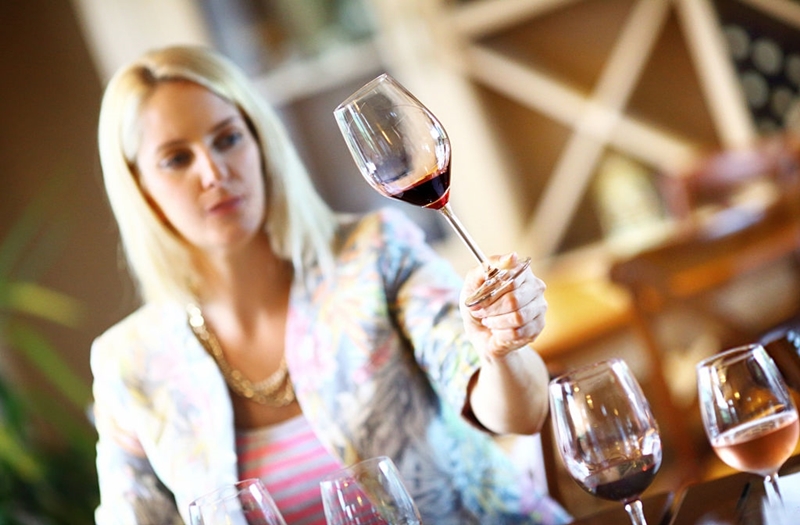The 10 visual facets of wine tasting
Sight as a reliable tool for evaluating wine quality

Wine tasting is often considered an exercise in sophistication, an interplay of senses that hinges on smell and taste. Yet, one of the most reliable aspects of this sensual ballet is sight. The visual examination of wine provides an array of objective data, distinct from the subjective nuances of aroma and flavor. While smell and taste are undoubtedly critical, the role of vision in assessing a wine's quality is indispensable, especially for identifying defects or confirming virtues. Here, we elucidate the visual cues that contribute to a complete wine evaluation.
1. Clarity and Transparency
The first thing that catches the eye is the wine's clarity and transparency, indicators of its manufacturing process. These visual cues can reveal much about the wine's decantation, filtration, fermentation, and clarification stages. They may also hint at the presence of sediments or lees. If the wine is murky or has sediments, it should be decanted before being served.
2. Vivacity and Luster
A wine might be clear yet lack vibrancy, appearing dull or flat in color. The brightness, or the wine's ability to reflect light, can offer clues about its acidity. Dull wines often lack sufficient acid, resulting in a flat taste profile. This is particularly vital in assessing white wines, where acidity is often a desired trait.
3. Fluidity
The way a wine flows into the glass can reveal its age and possibly its health. A more fluid wine often signifies a younger vintage. On the other hand, increased viscosity might indicate a problem—possibly an issue during fermentation or the presence of unwanted bacteria.
4. Bubbles
While bubbles are expected in sparkling wines, they can be either acceptable or a red flag in still wines. A minimal amount of bubbles, especially in young white wines, may simply be remnants of CO2 from fermentation and can even add freshness. However, excessive bubbling may indicate a second, unintended fermentation in the bottle, which would negatively affect the wine's quality.
5. Color
The wine's hue provides a wealth of information about its grape variety, origin, and age. Looking at the wine against a white background can offer a clearer perspective. The color at the center of the glass, where the wine has the greatest depth, will be the most telling.
6. Intensity of Color
A deep color generally implies a wine rich in tannins, body, and extract. The intensity can further fine-tune our understanding of the wine, complementing the basic color evaluation.
7. Tone or Shade
This is best observed at the thinnest part of the wine in the glass, often when tilted. The tone can hint at the wine's age and stage of evolution, revealing whether it is young, maturing, or aged.
8. Quantity of Color (Layering)
A wine's color saturation is not necessarily an indicator of its gustatory quality but informs us about its manufacturing method, grape variety, and maturity.
9. Alcohol Content
The 'tears' or 'legs' formed on the glass's walls after swirling the wine can indicate its alcohol and glycerin content. However, this should not be mistaken as an indicator of quality.
10. Sediments
Though rare in modern wines, sediments can affect both clarity and flavor. In older red wines, tannin deposits may require decantation. Other sediments like tartrate crystals can occur due to sudden temperature changes but are generally not a concern.
The visual examination is not just a cursory phase in wine tasting but a detailed, revealing stage that augments our overall understanding of the wine. From clarity to color and fluidity to bubbles, each visual aspect holds significance in the comprehensive evaluation of a wine, helping both novices and connoisseurs make informed judgments.
Founded in 2007, Vinetur® is a registered trademark of VGSC S.L. with a long history in the wine industry.
VGSC, S.L. with VAT number B70255591 is a spanish company legally registered in the Commercial Register of the city of Santiago de Compostela, with registration number: Bulletin 181, Reference 356049 in Volume 13, Page 107, Section 6, Sheet 45028, Entry 2.
Email: [email protected]
Headquarters and offices located in Vilagarcia de Arousa, Spain.